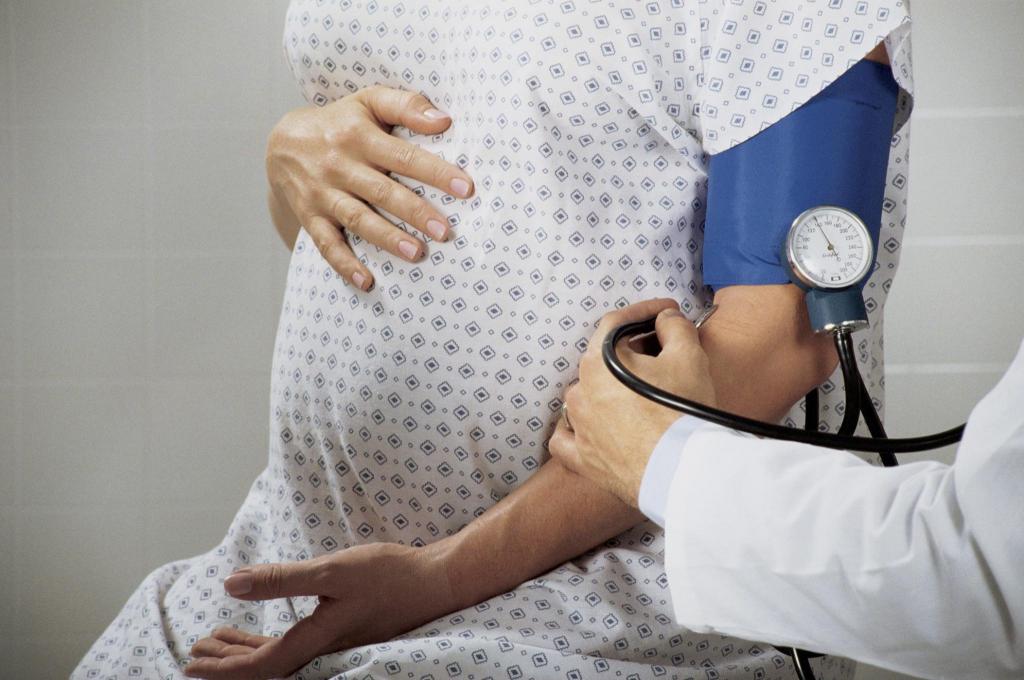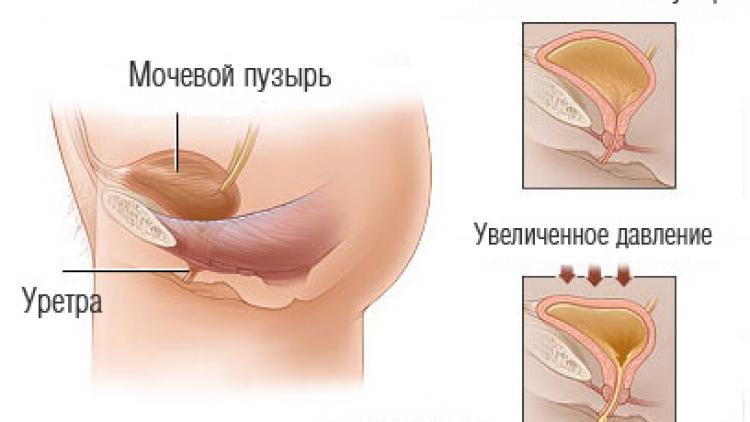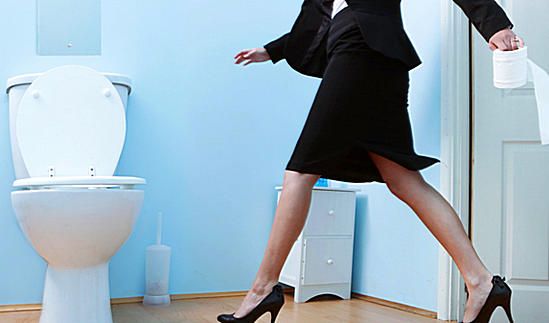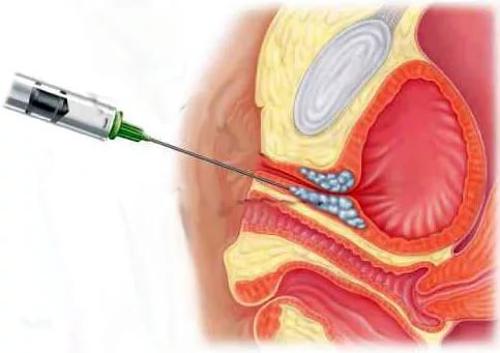The causes of urine leakage in women are diverse. According to statistics, half of the fairer sex is faced with this problem. In some women, it occurs at a young age (usually after childbirth), in others - in the elderly. This disorder in women is much more common than in children. Leakage of urine in adults gives them a lot of inconvenience.
Why does the disease develop?
It is fundamentally important to distinguish between the concepts of "leakage" and "incontinence." The latter means the arbitrary allocation of urine before the act of urination. Patient incontinence often occurs with severe sneezing or coughing. Speaking of leakage, we mean residual urine output after visiting the toilet.
The causes of uncontrolled leakage of urine can be various disorders in the body. These include diseases of the urinary system, and neurological pathologies, and hormonal disorders. Benign and malignant neoplasms of the bladder or pelvic organs are also capable of provoking leakage of urine in women and men. Treatment for this problem is prescribed after the main diagnosis.
To describe the mechanism of development of pathology, one should turn to the basics of anatomy. As you know, urine is formed in the renal pelvis, after which it passes through the ureters into the bladder and is there until it is full. The tank needs to be emptied at a time when the volume of urine in it is 300 ml or more. The fluid exerts pressure on the walls of the bladder, which provokes the transmission of a nerve impulse. Therefore, at a reflex level, a person feels the need to visit the toilet in the near future. If at one stage of the urinary process a malfunction occurs, a small amount of urine remains inside. When exposed to certain factors, it begins to leak.

Features of the disease in men
The causes of leakage of urine in women and representatives of the stronger sex have fundamental differences. In men, this disorder most often occurs after an invasive intervention in the pelvic organs, in particular, on the prostate gland, performed in the recent past.
If urine leakage is observed in the postoperative period, most likely, there is no reason for worry, since this phenomenon is temporary and does not require outside intervention. In this case, pathologies see a psychological background. There is no threat to the health and life of the patient, the so-called dribbling. This phenomenon means the release of a small amount of urine in men without the presence of diseases of the genitourinary system. A pathology is diagnosed in every fifth patient over the age of 40 years.
However, in some cases, urine leakage in men can be caused by the progression of serious diseases, for example, malignant tumors of the bladder or prostate, pelvic muscle dystrophy, urethral wall deformation, hemorrhagic cystitis, pyelonephritis, glomerulonephritis. Urine can leak in an obese man.
Involuntary urination in children
You need to seek medical help about urine leakage in a child only if the baby is 3.5 years old. In this and at an older age, the problem can be provoked:
- Anomalies of the intrauterine development of the urinary system.
- Untreated infectious and inflammatory diseases of the pelvic organs.
- Physical trauma.
- Mental disorders.
In these cases, therapy should be based on the principles of eliminating the pathology that served as the basis for the appearance of such a symptom. When making a diagnosis, it is also worth considering that hyperactive children are more likely to suffer from urine leakage than calm ones.
Pregnancy and childbirth
In addition to inflammatory, oncological and infectious diseases, the causes of urine leakage in women are often associated with the functioning of the reproductive system.

For example, one of the common and influential factors is pregnancy, for the course of which a temporary violation of blood circulation is characteristic. In a future mother carrying a fetus, urine is involuntarily excreted for the following reasons:
- Hormonal imbalance.
- An increase in the volume of the uterine cavity.
- Exerts pressure on the urinary tract weight of the child (relevant in the last months of pregnancy).
When the fetus is born, the structure of the female structures of the pelvis undergoes significant changes, since the mother’s body prepares in advance for the upcoming birth. With the transformation of the birth canal, urine begins to concentrate in the urethra, therefore, in pregnant women, the release of residual fluid does not occur immediately, but a few minutes after urination. This is the main symptom. The causes of leakage of urine in women have nothing to do with leakage of amniotic fluid (amniotic fluid).
With natural obstetrics, the likelihood of developing urinary incontinence is much higher than with cesarean section. After childbirth, the main cause of leakage of urine in women is a failure in the innervation of the muscles of the pelvic floor and the bladder. In most cases, the urethra function is fully restored several months after the baby is born. But it is important to understand that postpartum urinary incontinence is not the norm if the symptom is observed for a year or more. If measures are not taken to stabilize urination, the problem may worsen with age.
Other factors provoking pathology in women
After the onset of menopause in the female body, the production of hormones necessary for the full functioning of the reproductive and genitourinary systems decreases. The lack of estrogen and progesterone leads to a malfunction in the functioning of the endocrine system, which indirectly affects the ability of the sphincter to compress and expand in a timely manner. This feature is non-pathological and age-related, as it occurs due to the natural irreversible aging processes.

Specific therapeutic measures are taken depending on the causes of leakage of urine in a woman. Treatment is selected for each patient individually. Serious urinary system pathologies can cause involuntary urine excretion. For example:
- Infectious diseases, accompanied by the formation of single or multiple inflammatory foci. Burning and sharp pain will testify to such a disease.
- Urolithiasis disease. This is one of the common causes of urinary incontinence in women, the main symptom of which is painful cramping and hematuria.
- Cancers of the urethra, bladder or ureter.
- Damage or rupture of the walls of the main reservoir for collecting urine in the body due to injury or unsuccessful surgery.
It should be noted that the cause of leakage of urine in women can be a heart attack and stroke, suffered in the recent past. Often in patients, regardless of gender, after each visit to the toilet a few drops of urine are released. Incontinence can sometimes be caused by prolonged use of diuretics and other medications that affect the urinary function of the body and leave the body with urine.
Another reason for leakage of urine in women can be called old age. The thing is that after 65-70 years the volume of the bladder decreases, the elasticity of its walls and the tone of the sphincter decrease. The problem is also aggravated by the refusal of elderly women to periodically visit a gynecologist for preventive purposes, which makes it impossible to detect chronic inflammatory and tumor diseases in the early stages of foci.
Types of urine leakage in women
The causes of urinary incontinence are determined by the condition of the patient and related circumstances. So distinguish leakage of urine:
- Stressful.
- Imperative.
- Iatrogenic.
Stress leaks occur in almost half the cases. The main reason for this pathology is the malfunction of the urethra sphincter. Its weakening against the background of increased intra-abdominal pressure leads to the inability to retain urine. A striking example of stress leakage is a small discharge of urine during coughing, sexual intercourse, and laughter. The same category includes problems with urination during pregnancy and after childbirth. What to do if urinary incontinence occurs - to hide or treat a problem? You cannot be silent about the development of pathology. The sooner you start therapy, the more chances to get rid of the problem and live a full life.

Imperative leakage in some cases is considered a consequence of bladder hyperreactivity. This condition is characterized by excessive mobility of nerve impulses transmitted from the sphincter muscles when a minor irritant occurs. With imperative leakage, patients can release urine even with a small accumulation of urine, especially if there is an irritant to urge.
The third type of involuntary urination is associated with the effects of drugs that give a side effect in the form of urination disorders. The categories of such medicines include:
- Pseudoephedrine from adrenergic agonists - the drugs in this group cause urinary retention with subsequent leakage, are used in the treatment of bronchial diseases.
- Diuretics ("Uregit", "Furosemide", "Aldactone", "Veroshpiron").
- Hormonal drugs containing estrogen.
- Soothing medicines and antidepressants.
As soon as the medication is stopped, the problem goes away by itself, therefore, with iatrogenic leakage, the exclusion of these medications is the main principle of treatment. The causes of urinary incontinence determine the choice of a specific therapeutic tactic.
Treatment basics
Therapy of any type of complete or partial urinary incontinence must be started with the simplest and most accessible methods. Before taking medications, a number of lifestyle adjustments should be made:
- Constantly control weight or start an active fight against overweight.
- Reduce the consumption of diuretic and caffeinated drinks (tea, coffee, soda, energy drinks, beer).
- Stop smoking.
- Adhere to the established mode of urination, maintain intervals between emptying of the bladder.
- Exercise your pelvic floor muscles regularly.
- Engage in the treatment of chronic diseases (cystitis, pyelonephritis, etc.).
Kegel intimate gymnastics
Among the methods of treating urinary incontinence in women, the causes of which we learned earlier, Kegel exercises are elementary and simple. The essence of this gymnastics is to train the perivaginal and periurethral muscles of the pelvis. To feel these muscles, you need to sit back and provoke a urge to urinate, but at the same time not to allow the stream to leave the urethra.

If you perform Kegel exercises every day, the intimate muscles will become stronger and stronger. At least three times during the day should alternately reduce and relax the muscles of the pelvis. The execution time for reductions must be gradually increased. So, for example, starting to train using the Kegel technique, most women can keep their muscles in tension for several seconds, but after several weeks of daily training, the time can increase to three minutes.
The advantage of Kegel gymnastics is the ability to do it invisibly to others - at work, at home, behind the wheel, in a store, on the subway, etc. After establishing control over the muscles in a state of rest, the task becomes more complicated. Now you need to learn how to contract intimate muscles when coughing, sneezing.
Medicines
Among the various methods of treating urinary incontinence in women, drug therapy is considered less popular. The thing is that the use of special drugs for urine leakage is effective only for a fifth of patients with such a problem. In addition, medications are not prescribed for severe incontinence. Patients undergo a medical course at home. Treatment of urinary incontinence in women involves taking the following drugs:
- Adrenomimetics (Gutron, Irifrin, Mesaton). Drugs in this group strengthen the tone of the sphincter and urethra, however, they also affect blood vessels in a similar way. Adrenergic agonists are rarely used in treatment because of their minimal effectiveness and high likelihood of increasing blood pressure and the development of other side effects.
- Anticholinesterase drugs ("Ubretid", "Proserin", "Axamon", "Kalimin"). Taking these drugs improves muscle tone, therefore, they are mainly prescribed to patients with diagnosed hypotension of the bladder.
- Antidepressants ("Duloxetine", "Pyrazidol", "Azafen"). Such remedies are especially effective in the treatment of stress leakage. A significant drawback of antidepressants is their negative effect on the gastrointestinal tract.

Surgical intervention
There are other ways to treat urinary incontinence in women. So, with constant uncontrolled leakage, many patients are recommended surgical intervention. Today, urological surgeons have mastered several surgical manipulation techniques, which vary in complexity of execution. Preference for a particular type of treatment is given based on the severity of the disease and the anatomical features of the urinary system. Contraindications to surgery include cancer of the pelvic organs, chronic infections at the acute stage, and bleeding disorders.
The most popular technique is TVT or TVT-O. Such operations are also called sling operations. These are minimally invasive manipulations that last no more than half an hour under local anesthesia. The essence of the operation is that a synthetic loop-shaped mesh is introduced under the neck of the bladder or under the urethra, which is designed to hold the urethra in its natural position. Rehabilitation after sling operations is fast. Such an intervention is less traumatic. To introduce the mesh, the doctor makes minimal incisions in the vagina or groin. But sling operations have two significant drawbacks:
- High probability of relapse.
- Failure with anatomical defects of the urethra.
Volume-forming injections are another method of controlling urinary incontinence. During the procedure, a special hypoallergenic substance is introduced into the submucous membrane of the urethra, which partially compensates for the lack of soft tissues and fixes the urethra in the correct position. Manipulation is carried out on an outpatient basis under local anesthesia.

Laparoscopic colposuspension is an invasive operation that is performed using a laparoscope under general anesthesia. The essence of the method is the stitching of tissues located around the urethra. They are suspended from strong inguinal ligaments, which guarantees a stable long-term result of treatment. Despite the effectiveness of this kind of intervention, they rarely resort to it because of the impressive list of contraindications associated with the use of general anesthesia.